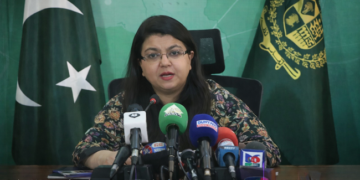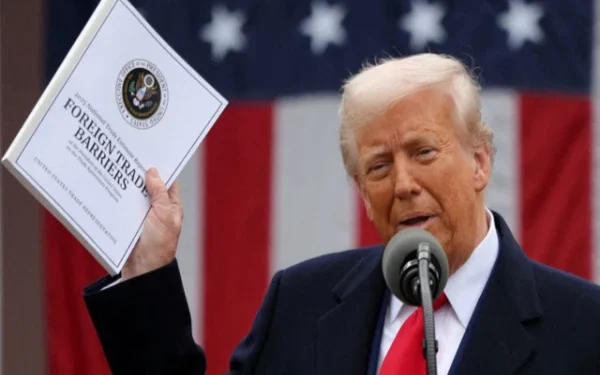Washington, D.C. – In a pivotal move with far-reaching economic consequences, the United States has officially begun implementing its revised global trade tariffs. The sweeping decision comes under the new trade framework introduced by the administration of U.S. President Donald Trump, aimed at rebalancing global trade and protecting American industries.
While countries around the world face varying degrees of tariffs, Pakistan has emerged with relatively favorable treatment, receiving significant concessions compared to India, its major regional rival in South Asia. The development marks a notable diplomatic success for Islamabad, reflecting weeks of strategic engagement with U.S. leadership and officials at multiple levels.
New US Trade Policy: Global Tariffs Explained
The White House, in a detailed statement, outlined the implementation of retaliatory tariffs on dozens of countries, aimed at addressing what Washington calls “unfair trade practices” and ensuring a level playing field for American manufacturers.
The policy, effective from today, applies differentiated tariff rates on imports from targeted countries. These new measures are intended to penalize trade imbalances, discourage protectionist practices abroad, and incentivize U.S. companies to invest domestically.
Tariff Rates by Country
According to the White House briefing, the new global tariff structure includes:
| Country/Region | Tariff Rate |
|---|---|
| Pakistan | 19% |
| India | 25% |
| Indonesia | 19% |
| Malaysia | 19% |
| Thailand | 19% |
| Philippines | 19% |
| Kazakhstan | 25% |
| Moldova | 25% |
| South Africa | 30% |
| Algeria | 30% |
| Libya | 30% |
| Myanmar | 40% |
| Laos | 40% |
| Syria | 41% |
| Canada | Increased from 25% to 35% |
| Israel | 15% |
This breakdown reveals a strategic and politically calculated approach, with South Asia receiving special attention, particularly India and Pakistan.
Pakistan’s Diplomatic Edge: A Calculated Foreign Policy Victory
While India has been hit with a higher 25% tariff, Pakistan’s 19% rate puts it on par with several Southeast Asian nations, despite regional tensions and past trade frictions with the U.S. Analysts and diplomatic sources attribute this preferential treatment to a string of high-profile engagements and strategic diplomacy conducted by Pakistan over the past few weeks.
Key Diplomatic Events That Influenced the Outcome
- Meeting Between Field Marshal Syed Asim Munir and Donald Trump
In a rare and symbolic interaction, Pakistan’s Chief of Army Staff, Field Marshal Syed Asim Munir, met with U.S. President Donald Trump in Washington. This meeting was widely regarded as a reset in Pakistan-U.S. defense and strategic cooperation, signaling mutual willingness to build closer ties. - Telephonic Contact Between PM Shehbaz Sharif and Secretary of State Marco Rubio
Pakistan’s Prime Minister Shehbaz Sharif engaged in a direct conversation with U.S. Secretary of State Marco Rubio, discussing bilateral cooperation, regional stability, and trade alignment. The call emphasized Islamabad’s readiness to align with U.S. economic priorities in Asia. - Engagements by Deputy PM Ishaq Dar and Finance Minister Muhammad Aurangzeb
During a recent official visit to Washington, Deputy Prime Minister Ishaq Dar and Finance Minister Senator Muhammad Aurangzeb held several closed-door meetings with U.S. trade and economic policymakers. These meetings highlighted Pakistan’s need for trade relief and presented a comprehensive investment and export roadmap.
These engagements together are seen as key influencers in shaping the U.S. decision to moderate tariffs on Pakistani goods.
Implications for Pakistan’s Economy
Export Competitiveness Improved
The imposition of a 19% tariff instead of 25% or higher places Pakistan in a comparatively stronger position. Its textile, surgical, leather, and sports goods industries, which rely heavily on exports to North America, now face less pressure than competitors in the region such as India.
This move could:
- Help protect jobs in Pakistan’s export sectors.
- Improve foreign exchange inflows.
- Make Pakistani products more competitive in U.S. markets.
- Help mitigate the impact of inflationary pressures on raw materials.
Foreign Investment Outlook Strengthens
Pakistan’s eased tariff treatment could serve as a signal to foreign investors that the U.S. sees Pakistan as a cooperative trade partner. This could increase U.S. foreign direct investment (FDI) in sectors such as:
- Energy
- Infrastructure
- IT services
- Agriculture
- E-commerce and fintech
India’s Position and Strategic Repercussions
India’s 25% tariff, though not extreme compared to other nations, is still viewed as a relative setback, particularly in light of growing India-U.S. defense and tech partnerships. The higher tariff may impact Indian exports such as:
- Pharmaceutical products
- Information technology services
- Automobiles and parts
- Garments and consumer goods
India has maintained a trade surplus with the U.S. for years, which may have contributed to its higher tariff rate. Some analysts interpret the U.S. action as a negotiation tactic to extract more favorable trade terms from New Delhi in the future.
Global Reaction and Strategic Significance
Canada and Israel Affected
The new U.S. tariff framework does not spare allies. Canada, one of the U.S.’s largest trading partners, saw its tariff rate increased from 25% to 35%, signaling growing tensions over cross-border trade imbalances, especially in aluminum, timber, and auto parts.
Even Israel, a long-time strategic ally, was not exempted, facing a 15% tariff under the revised policy. This suggests a broader shift in U.S. economic strategy—one that prioritizes domestic interests even at the cost of long-standing partnerships.
Sanctions-Level Tariffs for Some Nations
Countries like Syria (41%), Myanmar, and Laos have been hit with the highest levels of tariffs, bordering on sanction-level economic measures. This could further isolate these nations economically and politically.
Pakistan’s Opportunity for Broader Trade Realignment
With the U.S. providing relatively better tariff treatment, Pakistan now has the opportunity to expand its exports, diversify its trade portfolio, and improve global market access. To fully leverage this window, experts suggest:
- Streamlining export documentation and logistics
- Improving quality control and certifications
- Providing subsidies or incentives to export-oriented businesses
- Strengthening trade diplomacy with other regions (EU, GCC, ASEAN)
Pakistan could also use this development as a leverage point in trade talks with the European Union and the UK, citing improved trade standing with the U.S. as a reference.
Conclusion: A Geopolitical and Economic Win for Pakistan
The commencement of the U.S. global tariff regime marks a reshaping of international trade dynamics, placing strategic importance on bilateral diplomacy, economic alignment, and geopolitical positioning. Pakistan’s success in securing lower tariffs than India and many other regional players showcases its effective diplomatic outreach and evolving global relevance.
While challenges remain, including domestic economic reforms and industrial modernization, this trade relief from Washington could serve as a catalyst for economic recovery and export growth. The coming months will reveal whether Islamabad can capitalize on this opportunity and turn temporary diplomatic success into long-term economic advantage.

























